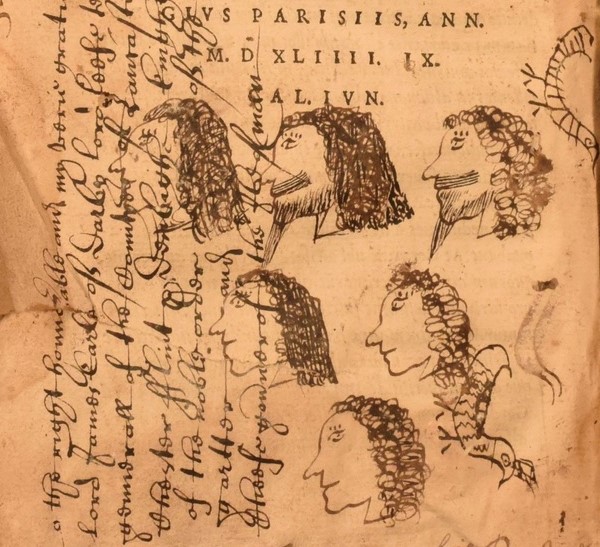
Knowledge Exchange Placement Report: Reading, Recording, and Recusancy – Inside the Library of an English Catholic Family, c. 1600–1850
Esther Rollinson is a postgraduate research student at The University of Manchester, writing a PhD thesis entitled ‘Revisiting the English Catholic Household: Faith, Family and Identity, 1660–1750’. This research is generously funded by The School of Arts, Languages and Cultures and is supervised by Professor Sasha Handley and Dr Stefan Hanß. As part of the University of Manchester’s Knowledge Exchange placement scheme, Esther has been working with Stonyhurst Museum to explore the library of the Finch family which is housed in the collections there. In this blog entry, Esther—who is an active member of The Bodies, Emotions and Material Culture Collective Manchester—writes about her exciting work at Stonyhurst.
The Finch family was one of many Catholic families living in Lancashire during a period in which the freedom of Catholic worship was restricted. They housed a chapel in the attic of their home at Lane End Mawdesley and priests visited the house to celebrate mass there. Their surviving library, which was donated to Stonyhurst College in 1938, contains a rich array of books, including Catholic devotional texts, Latin histories, and even treatises on astronomy and science.
Many of the texts in the collection show the rich engagement of former readers with their books. Across the collection, there are hundreds of examples of readers’ marginalia. In places, liturgical phrases and prayers have been added to the printed texts, whilst in others repeated ownership marks and even hand-drawn illustrations stand out. One particularly impressive example is that shown below, in which a hand-drawn illustration of a woman announces to the text’s reader that ‘All things are vaine’. Other inscriptions, including those which record the dates of the births and deaths of members of the Finch family, illustrate the emotional significance of some of these texts.
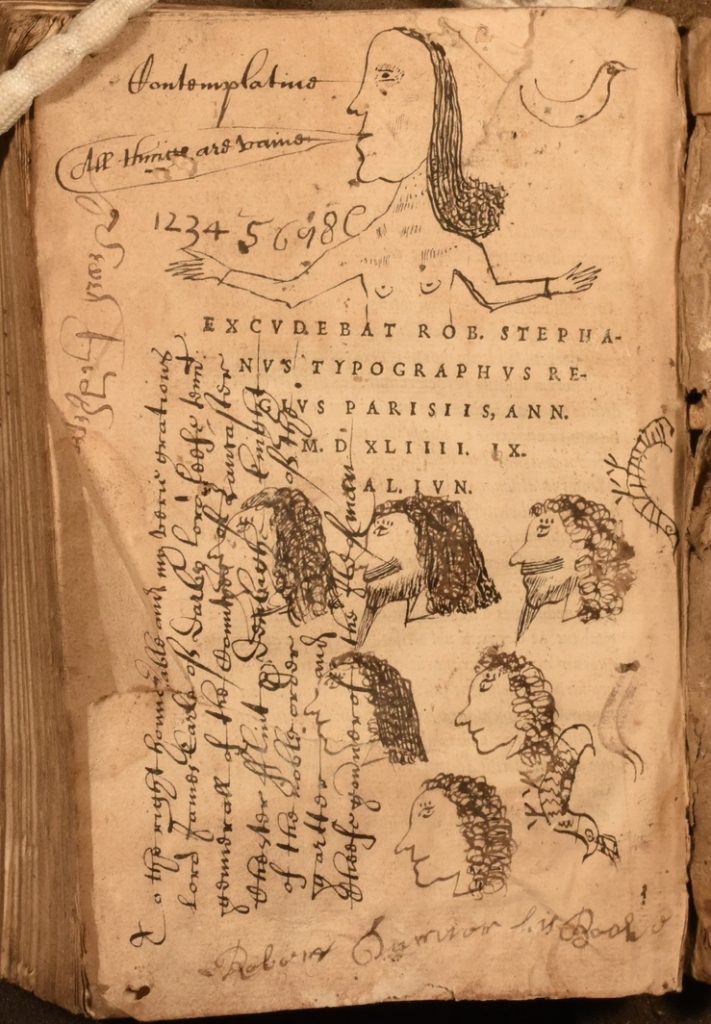
Image of the final page of Iustini ex Trogi Pompeii Historiis (Paris, 1643), Stonyhurst College, Finch-Haydock Colle. © Stonyhurst College. Photo: Esther Rollinson.
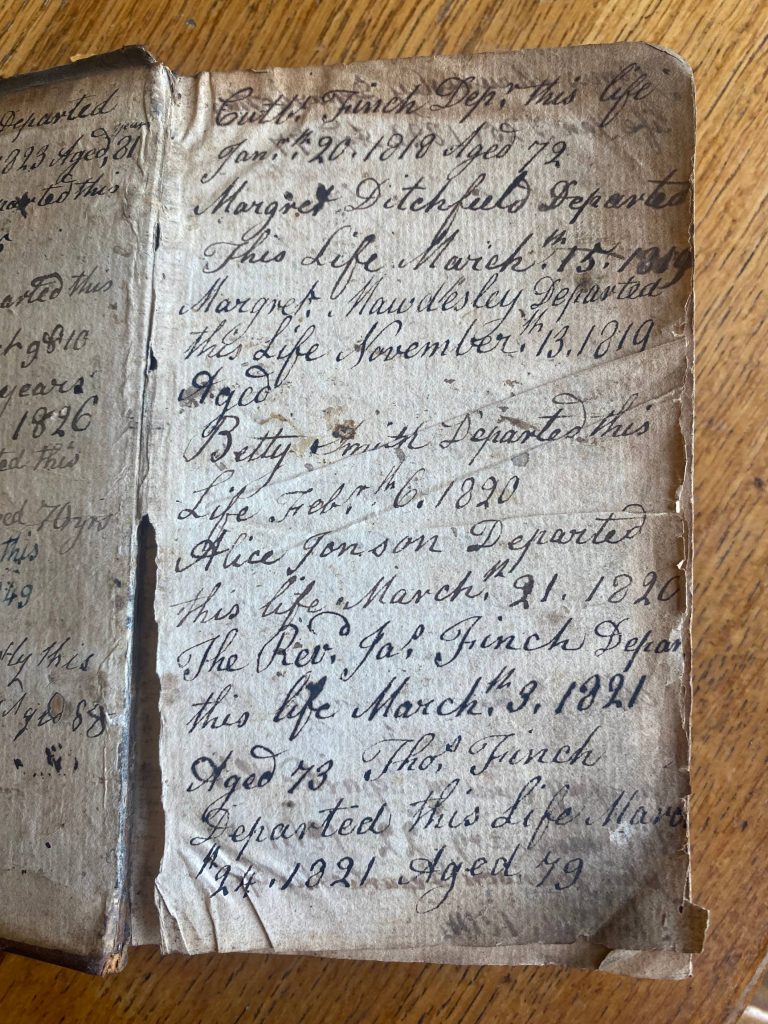
The front flyleaf of A Manual of Devout Prayers (Preston, 1768), Stonyhurst College, Finch-Haydock Collection. © Stonyhurst College. Photo: Esther Rollinson.
The Knowledge Exchange project was designed to explore how different imaging techniques could be used to uncover more about how these books were used. In its early stages, I used a digital microscope, borrowed from Department of History, University of Manchester, to take images of those books which had been rebound in cloth. These images revealed that some of the collection’s books were rebound in scraps of fabric which may once have been dress or furnishing materials. Such insights provoked new questions about the role of women in sustaining the household library.
More recently, myself and Stonyhurst’s archivist Joe Reed were able to work with the Imaging Lab at The John Rylands Research Institute and Library, Manchester, who lead the field of advanced imaging facilities-driven research. Multi-Spectral Imaging (MSI) in particular helped exploring a sample of books in the collection. MSI works by taking images at different wavelengths across the electromagnetic spectrum, including at wavelengths beyond the visible range, such as infrared and ultraviolet. These images can reveal traces of inks, glues, and dyes that do not appear clearly to the naked eye. One example of how this technology was used during our visit to The John Rylands Research Institute and Library can be seen in the images below, taken of a 1588 edition of the works of the church father John Chrysostom. At the back of this text, a seventeenth-century reader had added a list of books ‘sent downe to my Mr to keep’. This list had been covered over by a later owner and because of this, it was not clearly legible as such. Neither the detail of the list nor the text on the paper that had covered it could be read. Using MSI, it was possible to isolate the text that had been written on the pasted down page. This revealed that a letter, signed by one R. Shireburn had covered the original list. Even when using this very impressive technique, however, parts of the text are still hard to make out and work will now begin to try to further process these images, to read more of this letter, and hopefully to identify something of its provenance!
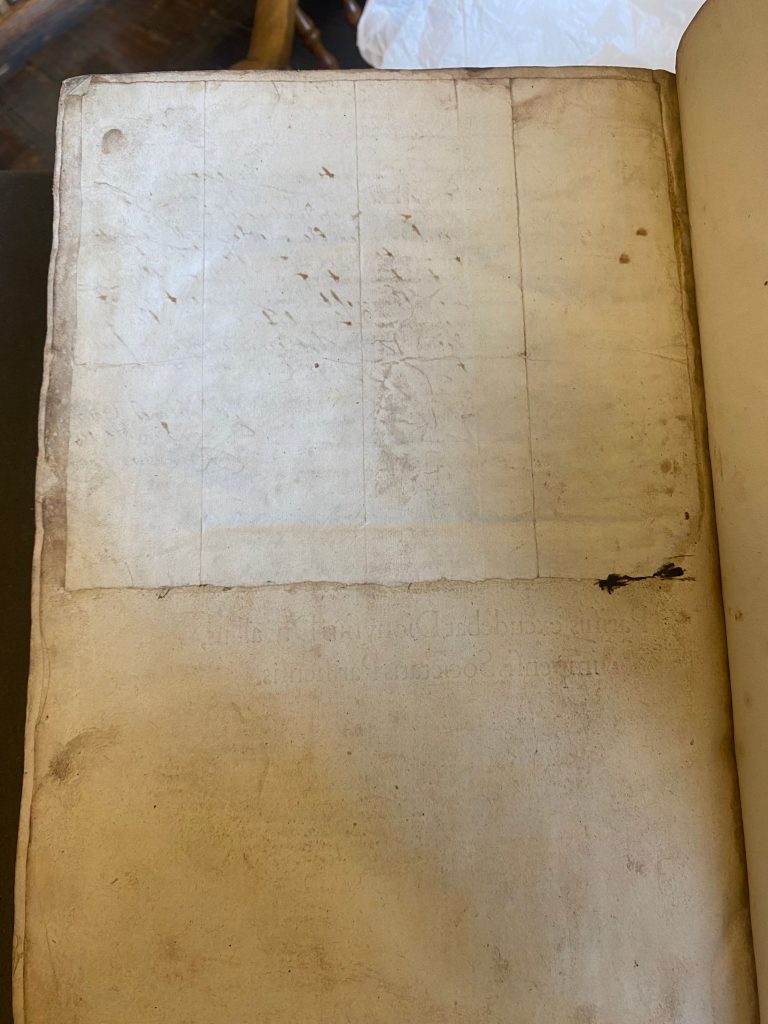
Images showing the pasted down letter stuck to the reverse of the final page of Divi Iohanis Chrysostomi Archiepiscopi Constantiolpolitani Operim Locupectissimus Index (Paris, 1588) Stonyhurst College, Finch-Haydock Collection (above) and the Multi-Spectral Image (below) taken of the pastedown in the same work. © Stonyhurst College and The John Rylands Research Institute and Library, The University of Manchester.
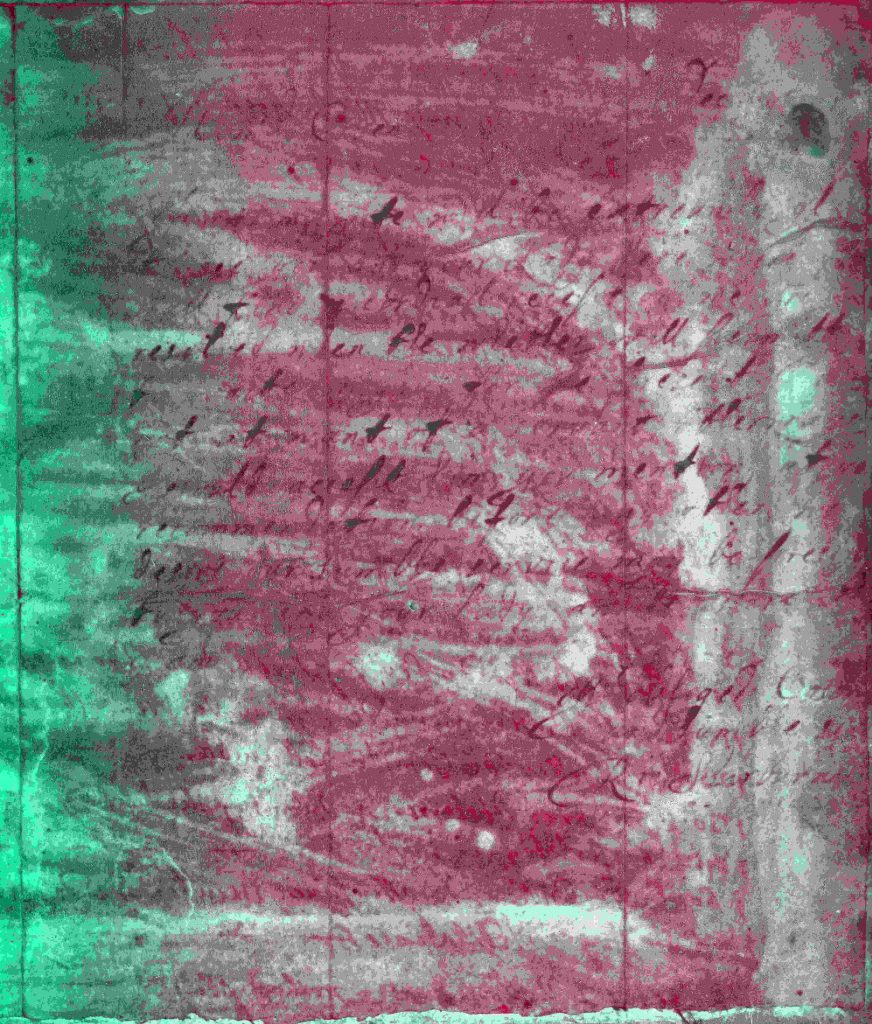
Some of the findings of this project will be presented this summer alongside Stonyhurst Museum’s Summer of Shakespeare exhibition. This short exhibition entitled Reading, Recording, and Recusancy: Inside the Library of an English Catholic Family, c. 1600–1850 will display a sample of the Finch library books. It will run at Stonyhurst College on Fridays and Saturdays throughout July and August. Please join us to learn more about the exciting history of this collection, and the amazing insights that can be gained from collaborative research across institutions, including novel scientific approaches to historical collections.
This research was made possible thanks to the support of Dr. Jan Graffius and Mr. Joe Reed, Curator and Archivist at Stonyhurst College. Special thanks must also go to Dr. Clarissa Chenovick, Assistant Professor at Florida Atlantic University, who has produced a handlist of the Finch collection, and Mr. Tony Richards, Senior Photographer at The John Rylands Research Institute and Library, whose expertise in advanced imaging was invaluable.






0 Comments